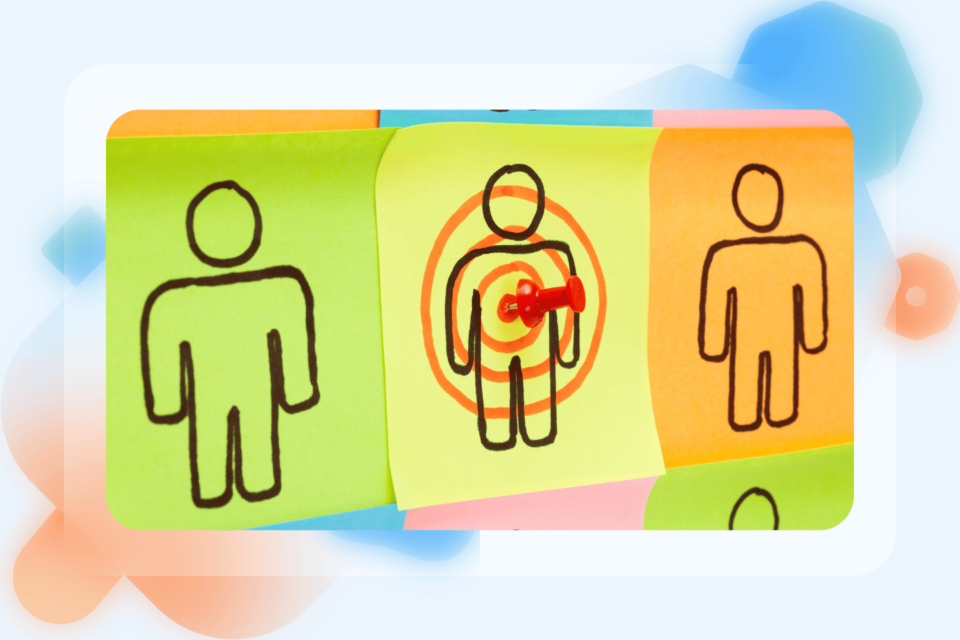Customer stickiness is a metric that measures how likely your customers will stay loyal to your brand, product, or service over time. This commitment is often driven by perceived value, which can stem from various factors such as pricing, convenience, product quality, and customer service.
In essence, customer stickiness is all about why shoppers choose you over the competition, and it starts with delivering quality products or services. With the highly competitive nature of many ecommerce companies and online businesses, understanding how to improve customer stickiness is critical for increasing customer retention and reducing churn.
Customer stickiness vs. customer retention

While customer stickiness and customer retention are closely related, they are entirely different concepts.
Customer retention refers to a company’s ability to retain its customers over time. This is typically measured as a percentage of customers who continue to do business with the company. This metric focuses on the overall customer base and looks back at actual customer behavior. However, customer retention alone doesn’t explain why customers stay loyal to a brand—it merely indicates that they do.
On the other hand, the customer stickiness metric provides insights into why customers remain loyal to a brand, focusing on the transactional value they experience. Measuring customer stickiness helps in understanding why customers repurchase products, improving relationships, and ultimately feeding into the rate of customer retention and business profitability.
Appreciating these subtle differences is key for businesses that aim to enhance customer stickiness by using customer feedback and developing strategies addressing the root causes of true customer loyalty.
Customer stickiness vs. customer loyalty

Customer stickiness and customer loyalty are also distinct concepts. Customer loyalty is about the connection with the brand itself, demonstrated by behaviors like repeat buying, engagement, and advocacy. Loyal customers are those who consistently choose a specific brand over others and often become brand advocates and end up promoting the brand to others.
Improving the customer experience and stickiness can help improve customer loyalty by engaging customers with personalized offers and incentives, driving repeat business, and understanding factors that drive customers to purchase more than once.
Customer stickiness is less about the brand and more about the actual products or services. It is the quality and value of what is being offered that keeps customers coming back. However, it can be seen as an early indicator of loyalty and driver of repeat business. By fostering customer stickiness, businesses can lay the foundation for long-term customer loyalty, ultimately leading to repeat purchases, to higher customer lifetime value and a stronger market position.
Here’s why customer stickiness matters

For a brand to ensure long-term success and profitability, customer stickiness is a necessity.
It serves as a stepping stone towards building customer loyalty, as it inspires loyalty and helps reduce churn rates. High customer stickiness can stabilize revenue, transform one-time buyers into repeat customers, and significantly impact the bottom line.
Customer success plays a crucial role in achieving customer stickiness by implementing customer success strategies such as smooth onboarding, ongoing product training, and creating a regular dialogue with customers.
Moreover, attracting new customers is significantly more costly than retaining existing ones. In fact, acquiring new customers can be 5 to 25 times more expensive than retaining them, as per Harvard Business Review. This highlights the importance of focusing on customer retention strategies. Concentrating on increasing customer stickiness allows businesses to secure more predictable revenue streams and cut marketing and sales expenditures.
Here are the top three reasons why customer stickiness benefits businesses:
Enhanced customer satisfaction
Maintaining customer stickiness necessitates proactive management of the customer experience. By ensuring that interactions with the product and brand are effortless and valuable, businesses can enhance customer satisfaction and encourage repeat business.
When customers stick around, your retention rates soar. Retaining existing customers is not only cost-effective but also crucial for long-term success. Customers who find value in your product or service are less likely to switch to a competitor.
What does this entail? Consistently meeting their needs and exceeding expectations, you build a loyal customer base that forms the foundation of your business. Think of it like this: happy customers are repeat customers, and repeat customers are the backbone of sustained growth.
Increased customer lifetime value
Improving customer stickiness can significantly boost customer lifetime value (LTV). Research indicates that increasing customer retention rates by just 5% can increase profits by 25% to 95%. This increased LTV not only contributes to higher revenue but also strengthens the brand’s market position and resilience against competitors.
Other key takeaways on how customer stickiness increases LTV include:
- The longer a customer stays with you, the more they tend to spend over time. This means that they are contributing more value to your company the longer they stay as your subscriber.
- This increased spending isn’t just about repeated purchases; it’s also about upselling and cross-selling opportunities.
- A sticky customer is more open to trying new products or services you offer because they trust your brand.
Positive word-of-mouth
Simply put, sticky customers are your best marketers, so it’s important to invest in providing them with unparalleled experiences.
When customers love your product or service, they’re more likely to share their positive experiences with friends, family, and colleagues. This word-of-mouth promotion is incredibly valuable because it comes from a trusted source, making potential new customers more likely to give your brand a try.
In the age of social media, one happy customer can lead to dozens of new ones. Positive reviews, testimonials, and social shares from engaged customers can significantly boost your brand’s reputation and reach, driving organic growth without the hefty marketing costs.
4 strategies to increase customer stickiness

Businesses need to put into action specific strategies that cater to the unique needs and preferences of their customers to efficiently boost and increase customer loyalty and stickiness.
1. Develop a unique value proposition
As it emphasizes the unique characteristics or benefits of a specific product or service, a unique value proposition is a vital driver of customer loyalty and stickiness.
This value proposition should:
- align with sales and marketing efforts
- ensure that the ideal customer understands the value of the product or service over the competition
- guide customer support and success teams to be well-versed in the unique value proposition to effectively communicate it to customers
2. Personalize your customer interactions
Personalization is a critical component in boosting customer satisfaction and promoting repeat business. Using customer data to personalize interactions can enhance the perceived value and build trust—ultimately leading to higher customer stickiness.
For example, Walgreens leveraged real-time data to personalize the customer experience for individual shoppers based on their unique preferences. This resulted in $315 million in incremental sales from digital media advertising in a single year.
3. Implement a customer loyalty program
Forbes research indicates that nearly three-quarters of consumers view loyalty programs as a significant aspect of their relationships with brands.
Developing a customer loyalty program that rewards frequent repeat purchases and higher spending can instill a sense of value and gratitude in customers—definitely a proven strategy to retain customers. Customer loyalty programs, when executed seamlessly, help to incentivize repeat business purchases and turn sticky customers into loyal advocates.
4. Focus on building trust and relationships
According to Harvard Business Review, 64% of consumers develop a relationship with a brand because they share common values with it. This emphasizes the significance of shared values in building consumer-brand relationships. Transparency about company policies and procedures also helps in building customer trust across the entire customer journey.
Key metrics to measure customer stickiness

By regularly doing customer surveys and monitoring specific stickiness metrics, businesses can assess the effectiveness of their efforts and make data-driven decisions to increase customer stickiness.
Key metrics for measuring stickiness include:
- Net Promoter Score (NPS): a reliable metric that helps gauge customer loyalty and satisfaction by asking customers how likely they are to recommend the company or product to others
- Customer Satisfaction (CSAT) score: provides insights into customer satisfaction and can predict long-term customer loyalty
- Customer retention rate, repeat purchase rate, and churn rate: offer valuable insights into customer behavior and engagement
The stickier, the better: start today!

Ultimately, increasing customer stickiness is all about building a lasting legacy in the marketplace and achieving greater resilience and profitability. We encourage you to implement these strategies and witness the transformative impact on your customer relationships and business success.
Customer stickiness is a powerful metric that goes beyond mere retention. The pursuit of customer stickiness is about building strong, lasting relationships that drive business success and resilience. Don’t hesitate to reach out to the LTVplus team to know more about how you can start implementing strategies for customer stickiness today.




